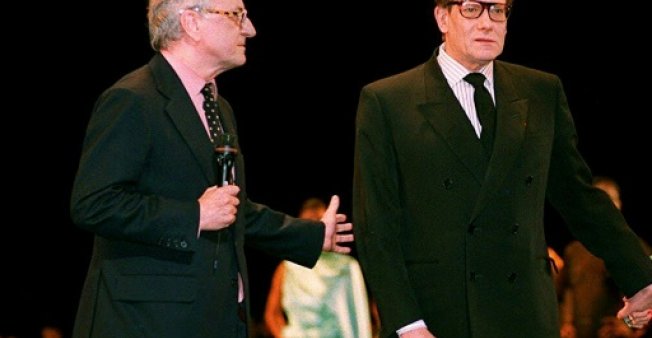
Yves Saint Laurent was one of greatest yet most private fashion designers of the 20th century.
Now only weeks after the death of his partner and lover Pierre Berge, the hard-nosed business brain behind the legend and the keeper of the flame, some of the creator’s innermost secrets are coming to light.
The first of two new museums dedicated to his memory opens in Paris on Monday as a raft of new books and documentaries — including one on his erotic drawings — attempt to decode the mysteries of the painfully shy man who revolutionised women’s fashion.
The Paris mansion where Saint Laurent shook up the dress codes for more than three decades has been turned into a museum for his haute couture creations.
A much larger museum, also paid for by the foundation set up by Berge to safeguard his partner’s legacy, opens next month in Marrakesh, the Moroccan city the couple loved and where Saint Laurent would often first sketch out his collections.
“Coco Chanel liberated women, but Yves Saint Laurent gave them power,” Berge once said, by appropriating the symbols of power from the male wardrobe — dinner jackets, safari suits and jumpsuits — and remaking them for women.
– Inner sanctum –
“I had noticed men were much more confident in their clothes,” Saint Laurent once said in a rare interview. “So I sought through trouser suits, trenchcoats, tuxedos and pea coats to give women the same confidence.”
His black tuxedo for women, known as “Le Smoking” — often wore over bare flesh — caused a scandal in 1966, with the New York socialite Nan Kempner dropping her pants when she was told by a Manhattan restaurant that women in trousers would not be admitted.
Saint Laurent would later design a jacket as a thigh-skimming mini dress just as Kempner, one of his best customers, had worn it.
The heart of the new Paris museum is Saint Laurent’s studio, the inner sanctum where he would work night and day in the run-up to his shows.
It remains just as he left it in 2002, his desk festooned with photos of his inner circle of glamorous female friends which included Catherine Deneuve, Bianca Jagger and Paloma Picasso.
Pride of place, however, goes to a New Year’s card he made from a painting his friend Andy Warhol did of his French bulldog Moujik.
One wall of the room is completely mirrored, which allowed Saint Laurent to work directly on his live models so he could see his creation from all angles as it progressed.
The museum also gives revealing insight into Saint Laurent’s creative process, developing his clothes from very basic sketches into complex designs that, in the case of some of his haute couture creations, could take thousands of hours to make.
– Berge’s enduring devotion –
“Unlike many other designers Saint Laurent began systematically archiving his work in the early 1960s — encouraged by Berge — and so we can follow the evolution of each item,” said a spokesman for the museum, which holds a treasury of 5,000 prototypes for his creations.
Other rooms in the museum are given over to Saint Laurent’s inspiration and the “imaginary voyages” his collections often took to Asia, Africa and most famously Russia.
But other than his sojourns in Morocco — which reminded him of his native Algeria where he was born in 1936 while it was still French — the designer was not much of a traveller.
With Berge he built up a considerable art collection and he borrowed liberally from artists like Picasso, Matisse and Van Gogh, most famously with his Mondrian dress, which became an instant pop icon when it hit the catwalk in 1965.
Berge always believed that Saint Laurent — who had begun his career by stepping into the shoes of Christian Dior when he was just 21 — was nothing less than an exceptional artist, calling him “the greatest designer of the second half of the 20th century”.
Having “spent all my life helping Yves Saint Laurent build his work, which I want to last”, Berge died earlier this month, just weeks before the museums opened.
His husband, the American landscape artist Madison Cox — whom he married this summer — told AFP that “10 days before he died he told me that ‘I am going to die totally at peace’, and I think that was true. He was a very determined man and he had put everything in place.”
Cox said the museums were also a tribute to Berge’s work supporting and protecting the fragile Saint Laurent, who was haunted by drug and drink addictions.
“Of course I and the whole team are profoundly sad that he will not be here,” added Cox, who now heads the pair’s charitable foundation. “But he would have wanted that we go on.”
